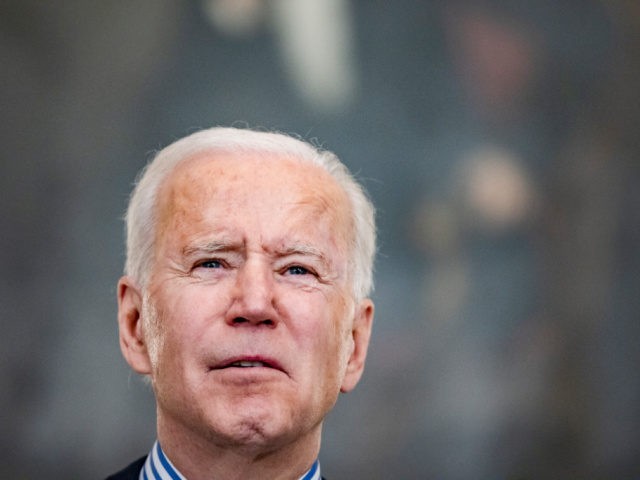The May jobs data released Friday bolster the arguments of those who say that the economy is suffering from an artificially constrained labor supply due to enhanced unemployment benefits.
When the pandemic struck, the federal government began chipping in an extra $600 per week to bolster the incomes of Americans thrown out of work by the pandemic and lockdowns. This was on top of regular unemployment benefits, and as a result many workers actually received more in benefits than they did on the job.
The bonus has since come down to $300 but even at the reduced level somewhere between 40 and 50 percent of those on unemployment receive more than they would on the job. This essentially puts them out of reach of employers. Even workers who earn less than what a job offers may decide that working full-time is not worth it if they can make nearly as much on unemployment.
Businesses have been complaining about this for months and nearly half of the states have announced plans to end the bonus payments. Reopening child care centers and schools should also help since some parents have been unable to accept full-time jobs during the shutdowns.
Supporters of keeping the payment intact through the summer have three main arguments.
First, they claim that the economy still is not healthy enough to risk cutting back on the income of the unemployed. The weakness in this is that the economy is much healthier than almost anyone thought it would be back in March, when the expiration of the enhanced benefits was set for September. Given the stronger-than-expected recovery, it probably makes sense to return to a normal level of unemployment benefits sooner.
The second point has been a go-to for President Biden. He argues that it is insulting to say that unemployment benefits are keeping Americans out of work because real Americans know the value of a job is more than just a paycheck and how dare anyone call Americans thrown out of work lazy? It’s not really an argument so much as moral posturing. But critics of enhanced unemployment benefits are not insulting people who stay on the dole because it pays so much. They’re arguing that that is what rational people do when offered more not to work.
The third point raised is that if employers really wanted to bring employees back to work they could just pay more. But many businesses, especially in the hospitality and leisure sector hard hit by the lockdowns and pandemic, already operate on slim margins. They cannot afford to pay workers much more just because the government is competing with them. And they cannot pass on the higher costs of labor because they are already charging as much as customers will pay.
This third point, by the way, is really an admission that enhanced unemployment payments are holding back people who would otherwise workers from accepting jobs. It’s just that the people making this argument think we should hand out benefits high enough that workers can choose not to take jobs that pay below $18 to $20 an hour, which is what the enhanced benefits work out to in many states. But using unemployment benefits as a backdoor to forcing wages up particularly penalizes small businesses that can least afford the higher costs.
What’s more, Friday’s data show that businesses are raising wages where they can. Average hourly earnings rose 0.5 percent in May. In the hospitality and leisure sector, average hourly earnings are up 1.3 percent to an all-time high of $18.09. The average of non-managerial workers in hospitality and leisure rose 1.2 percent in May to an all-time high of $15.87. If we compare this with the prepandemic month of February 2020, average hourly earnings are up 6.4 percent. We do not have inflation data for May, but in April the Consumer Price index was up 0.8 percent for the month and 4.2 percent over 12-months, so it is very likely that wage gains are far outpacing price hikes.
Another sign that demand for labor is high and rising is in the average weekly hours for private-sector employees. This rose from 34.4 in February 2020, around the long-term average, to a high of 35 in January and has now sat at 34.9 for two months even as the economy has added around 800.000 jobs and averare hourly wages have climbed. For leisure and hospitality workers, the average workweek is up to 26.6 hours, up from 25.8 prepandemic. Average hours for non-managerial employees are not 25.1, up from 24.7 prepandemic.
In short, employers are paying workers more and keeping them for longer hours, clear indications of strong demand for labor. And yet the labor force shrank in May compared with April and the labor force participation rate ticked down. The participation rate has barely moved since last June, a flashing red light that the supply of labor has become stuck.
That paints a picture of an economy growing more slowly than its potential because its workforce is being held back by well-intended benefits with harmful consequences.

COMMENTS
Please let us know if you're having issues with commenting.